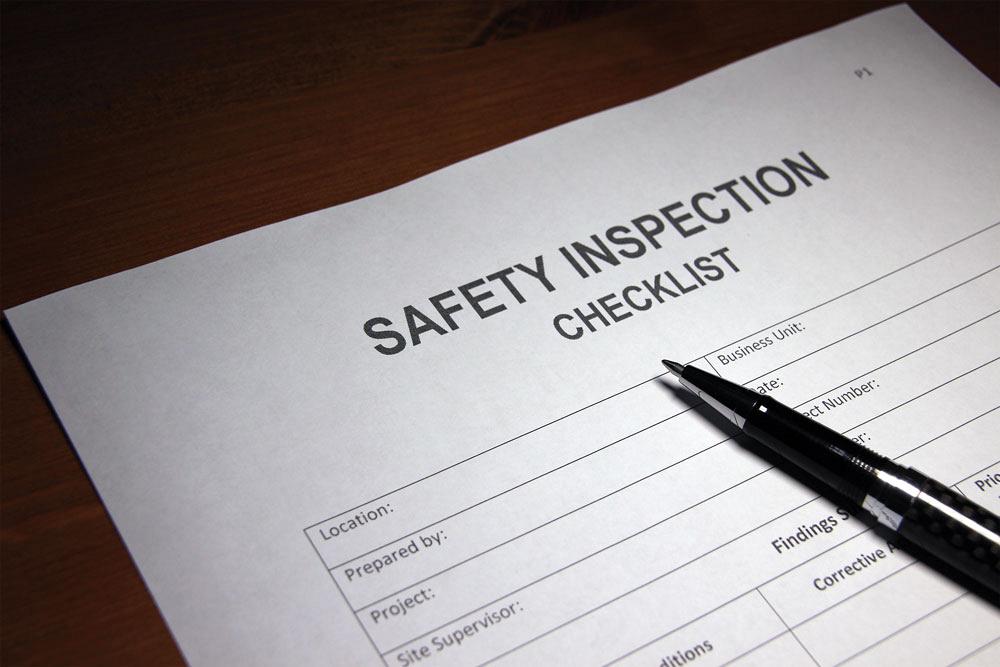- FMA
- The Fabricator
- FABTECH
- Canadian Metalworking
Preparing for an effective workplace inspection
Manufacturers can improve shop health and safety with regular, detailed inspections
- June 8, 2023
Every workplace has hazards unique to its environment or the nature of the work. In manufacturing, where workers may be exposed to noise, vibration, chemicals, and machinery during a shift, regular health and safety inspections are a crucial step to ensure worker safety.
Inspections provide an opportunity to identify, assess, and control hazards in the workplace and are a critical component of an organization’s health and safety program. They also offer an outlet for workers and supervisors to share any safety concerns they have and discuss the effectiveness of current control measures.
Many types of workplace inspections exist. Some are informal and happen every shift or before a task, while others are more formal and planned.
What the Law Says
In Canadian workplaces, regular inspections must be conducted at least once a month or as required by the nature of the work, equipment, and processes used in the facility. Individual industry regulators and local jurisdictions may have additional requirements relating to inspections so it’s important to consult yours to confirm.
A small team consisting of worker and management representatives from the health and safety committee (or representative) is required to carry out prescribed workplace inspections under health and safety legislation. Everyone conducting the inspection should have training and knowledge of regulations, safe work procedures, and potential hazards. Engineers, maintenance personnel, occupational hygienists, health and safety professionals, supervisors, and managers can be a part of the inspection team, or they may be called upon to help with certain aspects of the inspection.
How to Prepare
Start by ensuring the inspection team has all relevant information and materials at hand. Items that can assist them include workplace diagrams, relevant documents, checklists, and past inspection records. A notepad and camera can also help document findings during the inspection.
The workplace diagram should show the movement of material and workers and the location of air ducts, aisles, stairways, platforms, fixed machinery and equipment, emergency response equipment, alarms, and fire exits. To help keep workplace diagrams accurate, they should be reviewed and updated periodically.
Relevant documents may include workplace policies, procedures, rules and regulations, emergency response plans, incident reports, and other records. Being familiar with the safe operating conditions for the area can help the inspection team identify unsafe conditions and new hazards.
Develop a checklist that is customized for your workplace. Checklists can act as a good reminder for items and areas to inspect, but they should only be used as a basic tool to supplement the inspection. Try not to rely solely on the list because other hazards can get overlooked.
Past inspection records show what has been previously identified. They also reveal what an earlier inspection team concentrated on and what areas they did not inspect. Use the records to help look for issues, confirm whether recommendations were implemented, and determine if control measures are effective.
What to Look For
The inspection team should conduct a walkthrough of the facility, taking note of any potential hazards.
Be on the lookout for things like unguarded machinery, housekeeping issues, excessive noise, and electrical, ergonomic, and psychosocial hazards. Review work pace and speak to each worker to gauge overall morale and identify if there are additional workplace stressors.
As the team moves through the facility, it documents observations and findings. This documentation may include photographs, notes, and sketches of the location of hazards. If the inspection team notes something of immediate concern, these findings should be reported to the supervisor right away to be corrected. Don’t wait for the final report if a serious risk is noted.
Post-inspection Work
The post-inspection report should include as much detail as possible.
Start with the department or area inspected, the date and time of the inspection, and the names and titles of the inspection team members. List and assign a unique ID number to any unsafe conditions observed during the inspection. A person who was not present should be able to find the same item based on the information provided.
Include notes, checklists, photographs, and diagrams in the final report and note any items that may be a recurring safety issue. Unresolved issues may indicate that previous corrective actions were not properly implemented, were ineffective, or may be indicative that there is a systemic issue to address.
Report issues and recommendations in a concise, factual way. Management should be able to understand and evaluate the issues and assign priorities. After each listed item, specify the recommended corrective actions and share them with the person responsible for that area so they can assign the task and establish a due date for implementation. Then follow up with the person assigned to the task for a status update. Because some corrective actions may take longer to complete, consider copying all outstanding items to the new report.
Inspections are an important tool to identify, assess, and control hazards in the workplace. By preparing a report and sharing findings, workplaces can ensure accountability while continuously improving health and safety.
This article was supplied by the Canadian Centre for Occupational Health and Safety (CCOHS), 135 Hunter St. East, Hamilton, Ont. L8N 1M5, 800-668-4284, www.ccohs.ca.
subscribe now


Keep up to date with the latest news, events, and technology for all things metal from our pair of monthly magazines written specifically for Canadian manufacturers!
Start Your Free Subscription- Industry Events
MME Saskatoon
- May 28, 2024
- Saskatoon, SK Canada
CME's Health & Safety Symposium for Manufacturers
- May 29, 2024
- Mississauga, ON Canada
DiPaolo Machine Tools Open House 2024
- June 4 - 5, 2024
- Mississauga, ON Canada
FABTECH Canada
- June 11 - 13, 2024
- Toronto, ON Canada
Zoller Open House & Technology Days 2024
- June 12 - 13, 2024
- Ann Arbor, MI





















